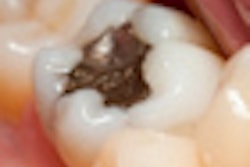
After months of speculation and years of debate, the U.S. Food and Drug Administration (FDA) today issued a final regulation classifying dental amalgam and its component parts -- elemental mercury and a powder alloy -- as class II devices, even as the agency insists that amalgam poses no health risks for any patient population.
The new rule reclassifies mercury from a class I (least risk) device to class II (more risk) device, classifies dental amalgam as a class II device, and designates a special controls guidance document that includes new labeling recommendations for dental amalgam products.
“The FDA has left the decision about dental treatment right where it needs to be—between the dentist and the patient.”
— ADA President John Findley, D.D.S.
However, while acknowledging that elemental mercury has been associated with adverse health effects at high exposures, FDA officials said during a media briefing that "the levels released by dental amalgam fillings are not high enough to cause harm in patients" -- including pregnant women, developing fetuses, and young children.
This is a significant change from the position on amalgam the FDA announced just last year as part of a lawsuit settlement with consumer groups:
Dental amalgams contain mercury, which may have neurotoxic effects on the nervous systems of developing children and fetuses. Pregnant women and persons who may have a health condition that makes them more sensitive to mercury exposure, including individuals with existing high levels of mercury bioburden, should not avoid seeking dental care, but should discuss options with their health practitioner.
Dental amalgam opponents said they are disappointed by the FDA's new stance.
"FDA broke its contract and broke its word that it would put warnings for children and unborn children for neurological damage," said Charles Brown, national counsel for Consumers for Dental Choice, the organization that filed the original lawsuit compelling today's action. "Bowing to the dental products industry, FDA for the first time in its history pulled a warning about neurological harm to children. We will see FDA in court."
Scientific evidence
FDA officials acknowledged that the new rule supersedes the guidance the agency issued last year. But they emphasized that over the last six years -- since first proposing the idea of classifying dental amalgam as a class II device -- the FDA has taken several steps to ensure that the classification of dental amalgam is supported by "strong science," including reviewing some 200 peer-reviewed studies on exposure to dental amalgam.
|
New labeling requirements for dental amalgam The special controls being imposed on dental amalgam as a result of the FDA's decision to reclassify the material are part of a new guidance document that includes recommendations on performance testing, device composition, and labeling. With regard to dental amalgam products, the document recommends the following labeling be added:
|
"Dental amalgam releases low levels of mercury vapor, a chemical that at high exposure levels is well-documented to cause neurological and renal adverse health effects," the new guidance document states. "[But] clinical studies have not established a causal link between dental amalgam and adverse health effects in adults and children age six and older."
In addition, the Agency for Toxic Substances and Disease Registry (ATSDR) and the Environmental Protection Agency (EPA) have established levels of exposure for mercury vapor that are intended to be highly protective against adverse health effects, including for sensitive populations such as pregnant women, developing fetuses, breast-fed infants, and children younger than age 6, the FDA noted.
"Exceeding these levels does not necessarily mean that any adverse effects will occur," the document states. "FDA has found that scientific studies using the most reliable methods have shown that dental amalgam exposes adults to amounts of elemental mercury vapor below or approximately equivalent to the protective levels of exposure identified by ATSDR and EPA. Based on these findings and the clinical data, FDA has concluded that exposures to mercury vapor from dental amalgam do not put individuals age six and older at risk for mercury-associated adverse health effects."
With regard to younger children, taking into account factors such as the number and size of teeth and respiratory volumes and rates, the FDA estimates that the estimated daily dose of mercury in children younger than age 6 with dental amalgams is lower than the estimated daily adult dose, and thus lower than the protective levels of exposure identified by ATSDR and EPA.
"Although the scientific evidence supports a conclusion that exposures to mercury vapor from dental amalgam do not put fetuses or children under six at risk for mercury-associated adverse health effects, the evidence is not as robust as for other subpopulations," the guidance document states. "FDA recommends that dental professionals consider this information when developing individual treatment recommendations for members of these subpopulations."
"Over the course of many years, there has been a significant amount of controversy over dental amalgam and whether the mercury vapor released has any harmful affects," said Susan Runner, D.D.S., acting director of the Division of Anesthesiology, General Hospital, Infection Control, and Dental Devices at the Center for Devices and Radiological Health. "By classifying dental amalgam as class II, we are strengthening our ability to assure that it is safe for its intended use as a restorative material. What we are providing is the latest scientific information about how dental amalgam interacts with the body that dentists and patients can use to decide on the best treatment options."
The ADA applauded the FDA's ruling, saying in a press release that it agrees with the FDA's decision not to place any restriction on the use of dental amalgam.
"The FDA has left the decision about dental treatment right where it needs to be -- between the dentist and the patient," said ADA President John Findley, D.D.S. "This decision underscores what the ADA has long supported -- a discussion between dentists and patients about the full range of treatment options to help patients make educated decisions regarding their dental care."
Visit the FDA Web site for a complete version of the agency's new rule and guidance document on dental amalgam.
Copyright © 2009 DrBicuspid.com


















